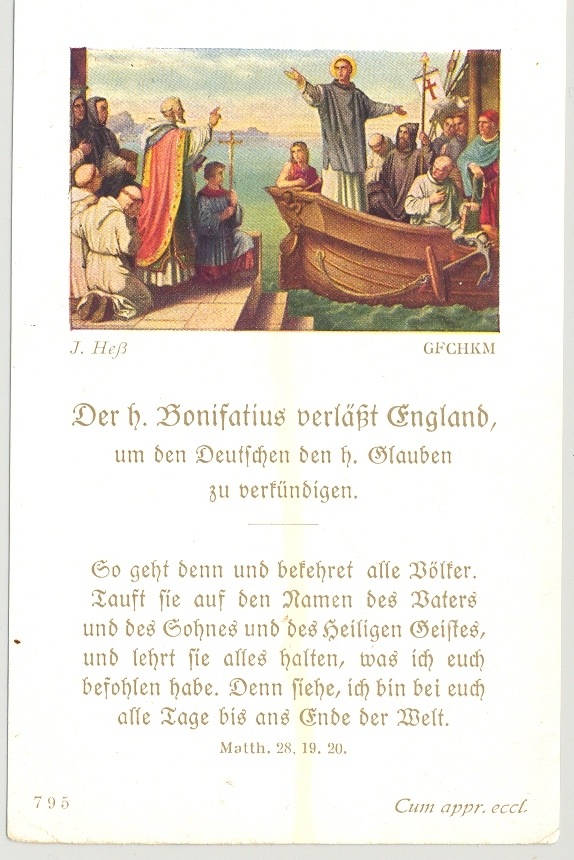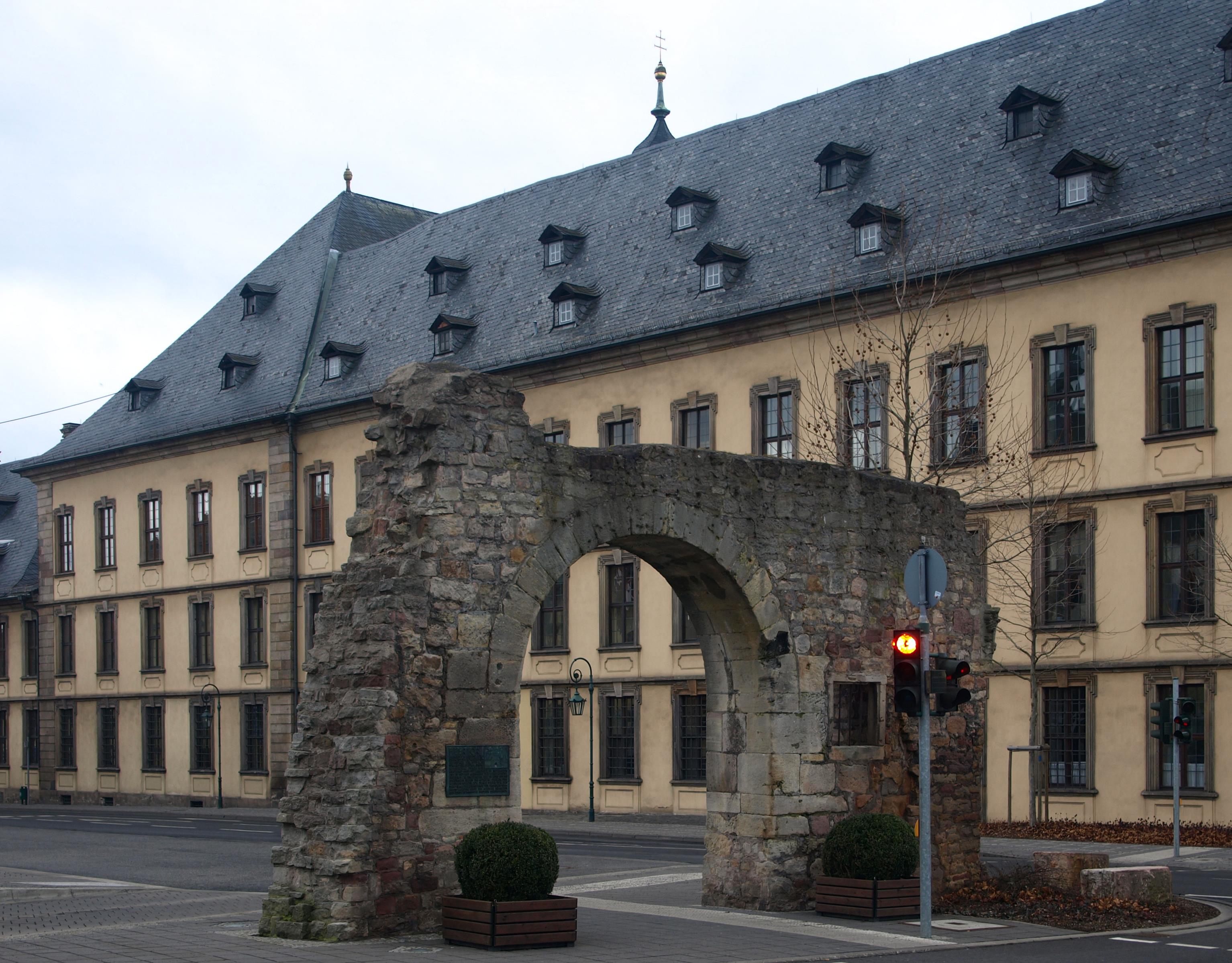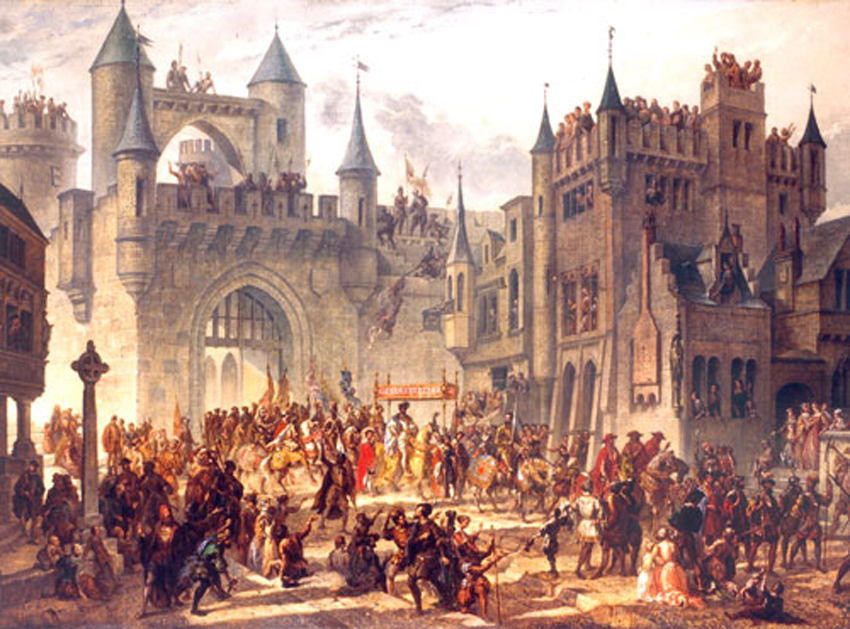|
Carloman, Mayor Of The Palace
Carloman (between 706 and 716 – 17 August 754) was the eldest son of Charles Martel, mayor of the palace and duke of the Franks, and his wife Chrotrud of Treves. On Charles's death (741), Carloman and his brother Pepin the Short succeeded to their father's legal positions, Carloman in Austrasia, and Pepin in Neustria. He was a member of the family later called the Carolingians and it can be argued that he was instrumental in consolidating their power at the expense of the ruling Merovingian kings of the Franks. He withdrew from public life in 747 to take up the monastic habit, "the first of a new type of saintly king", according to Norman Cantor, "more interested in religious devotion than royal power, who frequently appeared in the following three centuries and who was an indication of the growing impact of Christian piety on Germanic society". Assumption of power After the death of Charles Martel, power was not divided to include Carloman's half-brother Grifo, Charles's s ... [...More Info...] [...Related Items...] OR: [Wikipedia] [Google] [Baidu] |
Charles Martel
Charles Martel (; – 22 October 741), ''Martel'' being a sobriquet in Old French for "The Hammer", was a Franks, Frankish political and military leader who, as Duke and Prince of the Franks and Mayor of the Palace, was the de facto ruler of the Franks from 718 until his death. He was a son of the Frankish statesman Pepin of Herstal and a noblewoman named Alpaida. Charles successfully asserted his claims to power as successor to his father as the power behind the throne in Frankish politics. Continuing and building on his father's work, he restored centralized government in Francia and began the series of military campaigns that re-established the Franks as the undisputed masters of all Gaul. According to a near-contemporary source, the ''Liber Historiae Francorum'', Charles was "a warrior who was uncommonly ... effective in battle". Charles gained a victory against an Umayyad invasion of Aquitaine at the Battle of Tours, at a time when the Umayyad Caliphate controlled most of ... [...More Info...] [...Related Items...] OR: [Wikipedia] [Google] [Baidu] |
Siege Of Laon (741)
The siege of Laon was a Frankish siege of the rebel Grifo's fortified city of Laon in 741. The Frankish army under the Mayors of the Palace, the brothers Carloman and Pepin the Short, besieged the fortress and took Grifo, the Mayors' half-brother, captive. Prelude The Frankish Mayor of the Palace Charles Martel died on 22 October 741. He was survived by three heirs, Carloman, Pepin the Short and Grifo, the latter the son of Charles Martel's second queen, the Bavarian Swanachild. Grifo was encouraged by Swanachild to take control of the entire kingdom. Grifo occupied the city of Laon and declared war on his brothers. Siege Carloman and Pepin mobilized an army, advanced on Laon and captured it after a siege. Grifo was taken prisoner. Aftermath The brothers went on to recover provinces that had broken away after Charles' death. Carloman imprisoned Grifo in Neufchâteau in the Ardennes to prevent further revolts at home while the brothers waged war abroad. Citations Bib ... [...More Info...] [...Related Items...] OR: [Wikipedia] [Google] [Baidu] |
Saint Boniface
Boniface, OSB (born Wynfreth; 675 –5 June 754) was an English Benedictines, Benedictine monk and leading figure in the Anglo-Saxon mission to the Germanic parts of Francia during the eighth century. He organised significant foundations of the Catholic Church in Germany, church in Germany and was made Elector of Mainz, Archbishop of Mainz by Pope Gregory III. He was martyred in Frisia in 754, along with 52 others, and his remains were returned to Fulda, where they rest in a sarcophagus which remains a site of Christian pilgrimage. Boniface's life and death as well as his work became widely known, there being a wealth of material available — a number of , especially the near-contemporary , legal documents, possibly some sermons, and above all his correspondence. He is venerated as a saint in the Christian church and became the patron saint of Germania, known as the "Apostle to the Germans". Norman Cantor notes the three roles Boniface played that made him "one of the truly ... [...More Info...] [...Related Items...] OR: [Wikipedia] [Google] [Baidu] |
Anglo-Saxons
The Anglo-Saxons, in some contexts simply called Saxons or the English, were a Cultural identity, cultural group who spoke Old English and inhabited much of what is now England and south-eastern Scotland in the Early Middle Ages. They traced their origins to Germanic peoples, Germanic settlers who became one of the most important cultural groups in Britain by the 5th century. The Anglo-Saxon period in Britain is considered to have started by about 450 and ended in 1066, with the Norman conquest of England, Norman Conquest. Although the details of Anglo-Saxon settlement of Britain, their early settlement and History of Anglo-Saxon England, political development are not clear, by the 8th century an Anglo-Saxon cultural identity which was generally called had developed out of the interaction of these settlers with the existing Romano-British culture. By 1066, most of the people of what is now England spoke Old English, and were considered English. Viking and Norman invasions chang ... [...More Info...] [...Related Items...] OR: [Wikipedia] [Google] [Baidu] |
Odilo, Duke Of Bavaria
Odilo, also Oatilo or Uatilo (died 18 January 748) of the Agilolfings, Agilolfing dynasty was List of rulers of Bavaria, Duke of Bavaria from 737 until his death in 748. He had the ''Lex Baiuvariorum'' compilation edited, the first ancient Germanic law collection of the Bavarians. Life Odilo by his Agilolfing descent was an Alemannic nobleman, a son of Duke Gotfrid (d. 709) whom he succeeded in History of Thurgau, Thurgau until 737, when with the death of Hugbert of Bavaria the older line of the dynasty became extinct and he inherited the rulership of the Duchy of Bavaria. Odilo presided over the establishment of bishoprics in Bavaria in 739, when the four dioceses of Roman Catholic Diocese of Regensburg, Regensburg, Roman Catholic Archdiocese of Munich and Freising, Freising, Roman Catholic Diocese of Passau, Passau, and Roman Catholic Archdiocese of Salzburg, Salzburg were established by St. Boniface, who in 741 also founded the Roman Catholic Diocese of Würzburg, Diocese of W ... [...More Info...] [...Related Items...] OR: [Wikipedia] [Google] [Baidu] |
Theoderic, Duke Of Saxony
Theoderic or Theodric (Low German Diederik or Didrik, High German Dietrich) was the leader of the Saxons in the years 743–744. Onomastics suggests that he was related to the family of Widukind. In 743 the Frankish mayors of the palace, the brothers Pepin the Short and Carloman, marched against Odilo of Bavaria, who was nominally a Frankish subject. Carloman then turned north towards Saxony, which had ceased to pay the annual tribute of cows which the Franks had extorted first in the sixth century, and conquering the ''castrum ''Castra'' () is a Latin language, Latin term used during the Roman Republic and Roman Empire for a military 'camp', and ''castrum'' () for a 'Fortification, fort'. Either could refer to a building or plot of land, used as a fortified milita ...'' of Ho(o)hseoburg forced the Saxon duke Theoderic to surrender at a '' placitum'' held at that same place. The brothers invaded Saxony again the next year (744) and Theoderic was captured.RFA, 743 an ... [...More Info...] [...Related Items...] OR: [Wikipedia] [Google] [Baidu] |
Hunald I Of Aquitaine
Hunald I, also spelled Hunold, Hunoald, Hunuald or Chunoald (died 756), was the Duke of Aquitaine from 735 until 745. Although nominally he was an officer of the Merovingian kings of Francia, in practice Aquitaine was completely autonomous when he inherited it. His rule corresponds to the lowest point of the Merovingian monarchy, when the kingdom was in fact ruled by the mayors of the palace. Hunald was forced at the outset of his reign to accept the authority of the mayor of the palace Charles Martel, but he tried three times to throw it off in open revolt (736, 742 and 745). He was unsuccessful, although he did manage to retain Aquitaine undiminished. In 745, he retired to a monastery, giving power to his son Waiofar. He later went to Rome, where he died during an attack on the city. In spite of the opinion of certain historians that Hunald left his monastery to lead Aquitaine again in 768, Hunald I seems to have been a different person from the Hunald II, probably his grandson, ... [...More Info...] [...Related Items...] OR: [Wikipedia] [Google] [Baidu] |
Theuderic IV
Theuderic IV ( – 737, French, ''Thierry'') was the Merovingian king of the Franks from 721 until his death i737 He was the son of Dagobert III. During his reign, his realm was controlled by the mayor of the palace, Charles Martel. The king mostly stayed at Chelles Abbey, then in Château-Thierry. After his death, the Frankish throne remained vacant for seven years, until Carloman, one of Charles Martel's sons and successors, arranged for Childeric III Childeric III ( 717 – 754) was King of the Franks from 743 until he was deposed in 751 by Pepin the Short. He was the last Frankish king from the Merovingian dynasty. Once Childeric was deposed, Pepin became king, initiating the Carolingian dy ..., the last Merovingian king, to succeed him. Theuderic IV may have been the father of Childeric III, but this remains uncertain. It has also been suggested that Thierry IV of Toulouse was his son. References Sources * Merovingian kings 710s births Year of ... [...More Info...] [...Related Items...] OR: [Wikipedia] [Google] [Baidu] |
Childeric III
Childeric III ( 717 – 754) was King of the Franks from 743 until he was deposed in 751 by Pepin the Short. He was the last Frankish king from the Merovingian dynasty. Once Childeric was deposed, Pepin became king, initiating the Carolingian dynasty. Background Following the reign of Dagobert I (629–634), the power of the Merovingian kings gradually declined into a ceremonial role, while the real power in the Francia, Frankish kingdom was increasingly wielded by the mayor of the palace, mayors of the palace. In 718, Charles Martel combined the roles of mayor of the palace of Neustria and mayor of the palace of Austrasia, consolidating his position as the most powerful man in Francia. After the death of king Theuderic IV in 737, Charles Martel ruled without a king on the throne. After Charles Martel's death in 741, Carloman, son of Charles Martel, Carloman and Pepin the Short, his sons by his first wife Rotrude, became co-mayors of the palace. However, they soon faced revolt ... [...More Info...] [...Related Items...] OR: [Wikipedia] [Google] [Baidu] |
Fulda
Fulda () (historically in English called Fuld) is a city in Hesse, Germany; it is located on the river Fulda and is the administrative seat of the Fulda district (''Kreis''). In 1990, the city hosted the 30th Hessentag state festival. History Middle Ages In 744 Saint Sturm, a disciple of Saint Boniface, founded the Benedictine monastery of Fulda as one of Boniface's outposts in the reorganization of the church in Germany. The initial grant for the abbey was signed by Carloman, Mayor of the Palace in Austrasia (in office 741–47), the son of Charles Martel. The support of the Mayors of the Palace, and later of the early Pippinid and Carolingian rulers, was important to Boniface's success. Fulda also received support from many of the leading families of the Carolingian world. Sturm, whose tenure as abbot lasted from 747 until 779, was most likely related to the Agilolfing dukes of Bavaria. Fulda also received large and constant donations from the Etichonids, a lea ... [...More Info...] [...Related Items...] OR: [Wikipedia] [Google] [Baidu] |
Metz
Metz ( , , , then ) is a city in northeast France located at the confluence of the Moselle (river), Moselle and the Seille (Moselle), Seille rivers. Metz is the Prefectures in France, prefecture of the Moselle (department), Moselle Departments of France, department and the seat of the parliament of the Grand Est Regions of France, region. Located near the Tri-border area, tripoint along the junction of France, Germany and Luxembourg,Says J.M. (2010) La Moselle, une rivière européenne. Eds. Serpenoise. the city forms a central part of the European Greater Region and the SaarLorLux euroregion. Metz has a rich 3,000-year history,Bour R. (2007) Histoire de Metz, nouvelle édition. Eds. Serpenoise. having variously been a Celts, Celtic ''oppidum'', an important Gallo-Roman city,Vigneron B. (1986) Metz antique: Divodurum Mediomatricorum. Eds. Maisonneuve. the Merovingian capital of Austrasia,Huguenin A. (2011) Histoire du royaume mérovingien d'Austrasie. Eds. des Paraiges. p ... [...More Info...] [...Related Items...] OR: [Wikipedia] [Google] [Baidu] |
Bruges
Bruges ( , ; ; ) is the capital and largest city of the province of West Flanders, in the Flemish Region of Belgium. It is in the northwest of the country, and is the sixth most populous city in the country. The area of the whole city amounts to more than 14,099 hectares (140.99 km2; 54.44 sq. miles), including 1,075 hectares off the coast, at Zeebrugge (from , meaning 'Bruges by the Sea'). The historic city center is a prominent World Heritage Site of UNESCO. It is oval and about 430 hectares in size. The city's total population is 117,073 (1 January 2008),Statistics Belgium; ''Population de droit par commune au 1 janvier 2008'' (excel-file) Population of all municipalities in Belgium, as of 1 January 2008. Retrieved on 19 October 2008. of who ... [...More Info...] [...Related Items...] OR: [Wikipedia] [Google] [Baidu] |





